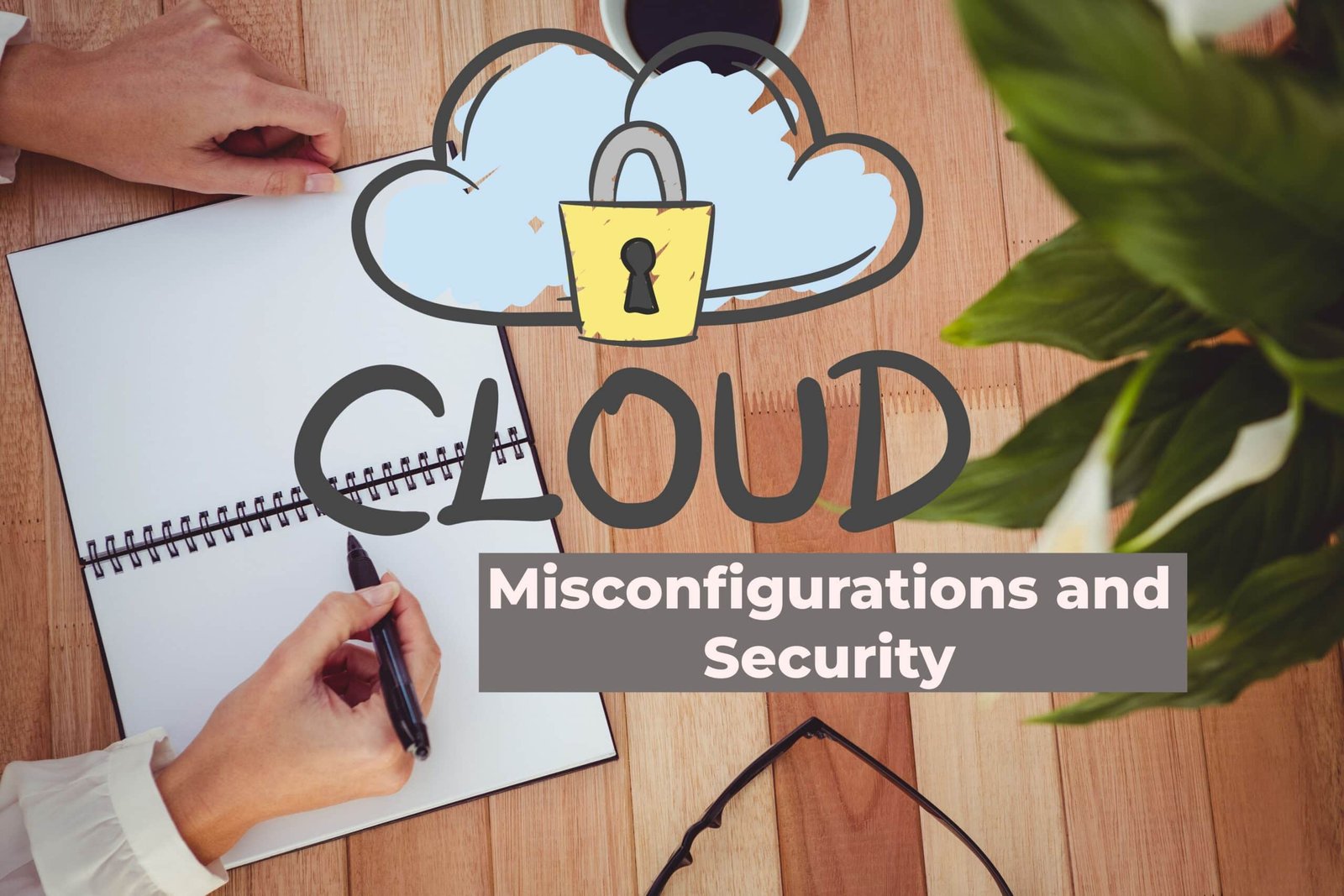How Do Cloud Misconfigurations Impact On Security?
Imagine the online world as a big, open sky, and cloud computing is like the main support beam that holds up the technology and business world today. But, just like any big building, it’s got to be strong to stand up against storms, right? Now, think of security dangers as those big, bad storms. The thing is, sometimes, people set up their cloud stuff the wrong way kind of like leaving windows wide open when a storm’s coming. It might not seem like a big deal at first, but it can cause a whole lot of trouble, messing with how secure and sound everything is up in the cloud.
These misconfigurations can happen in all sorts of places – like how the network is set up, who gets to see what, how information is locked up tight, and where it’s kept. If things aren’t set up just right, following the top-notch security tips, it opens up cracks that attackers on the internet can sneak through. Plus, the cloud is always changing and moving, kind of like a busy bee, making things bigger or smaller as needed. If someone’s not keeping a close eye on these changes, they might accidentally leave a door open for trouble, putting important stuff and the whole system in danger of being peeked at or messed with by someone who shouldn’t be there.
Understanding Cloud Misconfigurations
At the center of problems with cloud security, misconfigurations stand as silent culprits, yet often missed, issues that can cause a lot of headaches. Imagine putting together a complicated Lego set by following the instructions. If you put just one piece in the wrong spot, it might not knock everything over, but it makes the whole thing shakier and more likely to fall apart if you bump it. In the same way, when cloud misconfiguration doesn’t follow the right steps or security advice, that’s when mistakes happen.
These misconfigurations can be all sorts of things, like letting the wrong people see data, not having good enough checks to see who’s who, or setting up the network in a way that lets just anyone from the internet in. The thing with cloud services is they’re always changing and can be adjusted on the fly, which is super handy but also makes things more complicated. Every time something changes, adds on, or updates, there’s a chance for these little mistakes, especially if the people in charge don’t fully get how they’re supposed to work together with the cloud service to keep things secure.
Getting to the bottom of cloud misconfiguration means seeing them as more than just small slip-ups. There are big gaps in how secure the cloud is, which can put data at risk by making it easy for others to see, messing with its security, or even making it unavailable. When we look closer at how the cloud is set up, we realize these settings are super important for us. They’re like the threads that make up the cloud’s security net. Fixing these issues isn’t just about checking things off a list. It’s about knitting a stronger and tougher net that can stand up to the tricky parts of the online world.
Common Cloud Misconfigurations and Their Solutions

Going further into cloud security, we find a world filled with tricky spots, even for the very careful experts. Common cloud misconfigurations, though different each time, usually have a similar feel to them, like reminders of old slip-ups giving hints to those who pay attention.
- Open Storage Buckets: Think of it like leaving a treasure chest not just unlocked but wide open for anyone to peek inside. This mistake happens when online storage areas are accidentally set so anyone can look into them, exposing private information to anyone who knows a little about how to find it. The fix? Check on things regularly and use special tools that help spot these slip-ups automatically, ensuring private stuff stays out of the public eye.
- Inadequate Access Controls: Sometimes, in a hurry to get services up and running, the rule of giving people only the access they need gets forgotten. It’s like giving out keys that open every door to everyone when they only need one key for one door. To fix this, make sure people can only get to the stuff they need by setting up proper access levels, and keep checking who has access to what to close this loophole.
- Lack of Encryption: Moving data around the cloud without encrypting it is like yelling secrets in a busy place. Making sure data is scrambled (encrypted) both when it’s being sent and when it’s just stored is a basic but very important step for keeping it secure. Starting with the encryption options cloud services already offer and then adding more security as needed is a good way to go.
- Misconfigured Network Settings: Imagine a maze that’s supposed to protect a treasure, but it has too many open doors leading straight to it. Setting up network defenses the wrong way, like making firewall rules too loose, opens up gaps for trouble. Tightening up those defenses, dividing the network into separate areas to control movement, and always watching for odd activity in the network can patch up these holes.
Fixing these common misconfigurations isn’t just about quick fixes for each problem. It’s about taking a big-picture approach to keeping things secure in the cloud. This means always keeping an eye on things, using tools to automatically check that everything’s set up right, and making sure everyone who works with the cloud knows how important security is. It’s like being on a never-ending watch, where every move you make to fix something solves the issue at hand and strengthens your online defenses against any future attacks.
The Domino Effect on Security
When something’s off with how the cloud is set up, it’s not just a tiny crack in the wall; it starts a whole chain reaction. Imagine one small slip-up causing a bunch of problems, each one making things worse. It’s like one misstep leads to another, and before you know it, you’re facing a big mess.
Think about a time when someone left the door to a storage space wide open without realizing it. At first glance, it might not seem like a big deal. But that one oversight can snowball quickly. Suddenly, private information is out there for the taking, like a shining light for hackers. With this info, they can trick people, spread harmful software, or even steal someone’s identity. It’s like knocking over the first domino and watching as everything else comes tumbling down, one by one.
Because everything in the cloud is linked together, a problem in one spot can lead to trouble in other places too. Let’s say someone gets a hold of login info because the sign-in system wasn’t tight enough. That person could then sneak into other parts of the cloud setup. They could mess with information, interrupt services, or even attack other places, making the problem much bigger than where it started.
This shows why it’s super important to be on top of cloud security all the time. It’s not enough to just fix problems when they pop up. We need to see how everything in the cloud is connected and how one small issue can lead to big troubles. To keep things secure, you need strong rules on who can get in, scrambling data to keep it private, checking regularly to catch problems early, and making sure everyone knows how important security is. By understanding how one issue can lead to another, like dominoes falling, companies can come up with plans that not only solve the immediate problems but also make their whole security setup stronger against all kinds of online threats.
How to Safeguard Your Data from Cloud Misconfigurations?

In the online world, where data is super valuable for you, like gold, keeping it secure from cloud misconfigurations means being alert, using smart technology, and following the best tips out there. It’s not only about putting up big walls; it’s about setting up clever defenses that can change and grow as the cloud world keeps shifting and turning.
- Implement Strong Access Management: Start by making your digital keys with a lot of care. Use strong rules for who gets access to what, making sure people can only get to the stuff they need for their jobs nothing more, nothing less. Adding something like multi-factor authentication is like putting a tough guard at the door to stop unwelcome visitors.
- Conduct Regular Security Audits and Assessments: Walking through the cloud without knowing where you’re going can lead you off track. Doing regular security check-ups is like having a map that shows you where the trouble spots might be. You can use special tools that look through your cloud setup automatically and point out any problems before they turn into big security headaches. Think of these check-ups like regular health exams to keep your cloud running smoothly.
- Encrypt Sensitive Data: In the world of cloud security, encryption is like your shield. Scrambling data when it’s just sitting there and also when it’s being sent makes sure that even if someone gets their hands on it, they can’t understand or use it. Start with the scrambling tools your cloud service gives you, and think about extra steps for really private stuff.
- Leverage Cloud Security Posture Management (CSPM) Tools: In the constantly changing cloud world, having cloud security tools is like having a lighthouse guiding the way. These tools keep an eye on your cloud security all the time, spotting and fixing misconfigurations automatically. Using these tools means you’re always ready and a step ahead of possible dangers.
- Educate and Train Your Team: Last but not least, make your team strong. Your security is only as good as the people looking after it. Regular training sessions can make everyone more aware of the best ways to stay secure and the newest risks out there, turning your team into a quick, knowledgeable, and ready security force.
Keeping your data secure from cloud misconfigurations is a lot like taking care of a garden. It needs regular care, the right tools, and a way of dealing with problems before they get big. When you make these habits a key part of your cloud security plan, you build a strong and flexible defense that can handle and reduce the dangers of cloud misconfigurations.
Best Practices for Mitigating Risks
Mitigating the dangers of cloud misconfigurations requires a smart, well-thought-out plan that combines technology, steps to follow, and people’s know-how. It’s like creating a security blanket that’s tough and quick to react, ready to change as the online world keeps changing.
- Adopt a Security-First Culture: Making sure everyone in your company thinks “security first” is really important for us. It means making security a part of everything you do, from starting new online services to how you handle things every day. This change in attitude makes sure everyone is on the lookout, making being careful normal, not something special.
- Utilize Configuration Management Tools: With so many cloud services, trying to keep track of all the settings by yourself is super tough. Tools that manage these settings for you can be a big help. They keep an eye on your cloud stuff, make sure everything’s set up right, catch when something’s off, and can fix things automatically to keep your cloud secure according to your rules.
- Embrace DevSecOps Practices: Bringing security into every step of making and running your cloud services means you don’t just think about it at the end. This way, the people who make, run, and protect your services work together from the start, spotting and fixing security issues early on.
- Implement Incident Response Plans: Even with great security, problems can still happen. Being ready with a solid plan means you can handle security issues fast and well. This plan should lay out what to do, how to look into the problem, and how to get things back to normal, reducing the trouble a security issue can cause.
- Stay Informed and updated regularly: The world of cyber security is always changing, with new risks popping up all the time. Keeping up with the latest in security and regularly updating and fixing your cloud services is key. These updates and fixes are your best bet against known risks, shutting down weak spots that attackers could take advantage of.
By including these smart tips in your cloud security plan, you build a strong, flexible system that can handle not just the rough weather of online dangers but also do well despite them. It’s all about getting better all the time, where every move you make makes your protection stronger and your ability to bounce back from problems even better, especially with all the different kinds of risks out there in the cloud.
In conclusion
In the huge, connected world of the cloud, security isn’t just an extra feature it’s a key support that keeps data and services secure, private, and available. Handling the tricky spots of cloud misconfigurations means being alert and ready to act, with a solid plan that includes the best security steps as a core part of how the cloud works. This involves making security a top priority from the start, using the latest tools, working well together across different teams, and always keeping up with new security updates. Keeping the cloud secure is both a journey and a promise. As we move forward in this digital age, it’s important to remember that the real strength of our cloud security doesn’t just come from the tech we use, but from our united effort to keep a safe space where data is well-protected by strong, flexible defenses.
FAQs
What is a cloud misconfiguration?
A cloud misconfiguration is like setting up a security camera but forgetting to turn it on. It happens when cloud environments aren’t set up or maintained correctly according to security best practices, leaving gaps that hackers can sneak through.
How can a simple misconfiguration cause a security issue?
Imagine leaving your house with the front door unlocked. A simple misconfiguration in the cloud is similar—it can give cyber attackers easy access to steal data or cause damage, much like an intruder could walk into an unlocked home.
Are cloud misconfigurations easy to spot and fix?
Finding and fixing cloud misconfigurations can be like looking for a needle in a haystack, especially in large, complex cloud environments. It requires regular checks and the use of specialized tools to identify and rectify these issues effectively.
What’s the most common type of cloud misconfiguration?
One of the most common slip-ups is leaving data storage, like cloud buckets, open to the public. It’s like accidentally sharing your private diary with the whole world, exposing sensitive information to anyone curious enough to look.
Can cloud misconfigurations affect small businesses, or is it just a big company problem?
Cloud misconfigurations don’t discriminate by size; they can impact anyone using cloud services, from solo entrepreneurs to giant corporations. It’s like catching a cold; both kids and adults can get it if they’re not careful.







